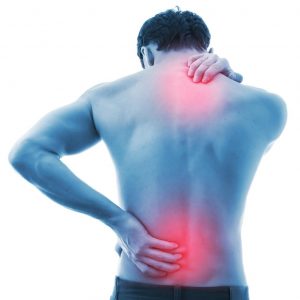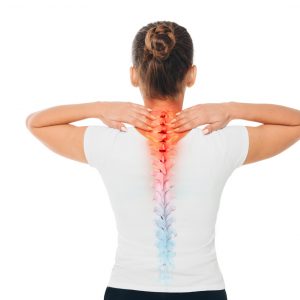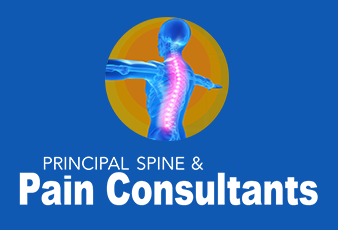
Spinal Degenerative Disc Disease
Degenerative disc disease occurs when the intervertebral discs in the spine gradually break down.
This spinal condition is one of the most common causes of neck pain. Even the healthiest individuals endure spinal wear and tear due to the drying and shrinking of discs. This degeneration is a natural part of the aging process. Degenerative disc disease has the potential to worsen, causing arthritis, spinal stenosis, or disc herniation that pressures the spinal cord as well as the nerves.
Causes of Degenerative Disc Disease
Degenerative disc disease results from wear and tear or an injury. An injury to a disc that progresses across time has the potential to prove debilitating. Inflammation near the disc can also cause this spinal condition. If the disc’s outer rings fail to absorb spinal stress, micro-motion instability occurs. Proteins in the disc irritate nearby nerves, causing the inflammation that results in pain. Such pain can move all the way down the back to the leg nerves.


Symptoms of Degenerative Disc Disease
The degeneration of the cervical disk, meaning the neck, leads to neck stiffness, discomfort, and pain typically characterized as mild. If you experience neck pain that moves down into your shoulders and arm or numbness/weakness in these areas, you might have cervical disc degeneration.
Lumbar disc degeneration commonly manifests in the form of pain throughout the lower region of the back (lumbar), radiating into the hips and possibly all the way to the legs. Such degeneration can also manifest in the form of significant pain when carrying heavy items. Some patients experiencing lumbar disc degeneration feel pain when sitting. Furthermore, if you feel pain when you twist, lift, bend, cough, or sneeze, you might have degenerative disc disease.
Treating Degenerative Disc Disease
There is no reason to attempt to live the rest of your life with degenerative disc disease. This is a painful spinal condition that will make even the simplest of your daily activities quite painful. Principal Spine is here to provide the optimal treatment modality for your unique pain.
Spinal Injection
Epidural steroid injections will relieve much or all your pain. This injection is provided in the lumbar portion of the back, the thoracic section of the back, the buttocks, or the cervical (neck) region.
Medication
Pain relievers such as acetaminophen and non-steroid anti-inflammatory drugs will help reduce the pain caused by degenerative disc disease. However, if necessary, you will be prescribed a stronger prescription pain medication.
Physical Therapy
Specific exercises, stretches, and movements performed under the supervision of a physical therapist will mitigate pain resulting from degenerative disc disease. Examples of such exercises include leg raises that strengthen the back/hips/core and pelvic tilts that strengthen ab muscles.
Minimally Invasive Lumbar Microdiscectomy
This procedure removes a section of the damaged disc. The removal of the disc reduces the pressure placed on the spinal cord, ultimately making life that much easier and enjoyable to live.
Cervical/Lumbar Artificial Disc Replacement
Opt for artificial disc replacement and the compromised disc will be replaced with an artificial disc.
The insertion of a comparably strong artificial disc makes it easier to exercise and remain comfortably seated for extended periods of time.
Minimally Invasive Lumbar Fusion
Minimally invasive lumbar fusion connects two or more vertebrae within the spine. The fusion of the vertebrae is permanent. However, the incision made to join the vertebrae is minimally invasive, meaning it will be quite small so there is no reason to fear this surgical procedure.
Minimally Invasive Cervical Fusion
This procedure involves a minor incision in which vertebrae in the cervical spine are permanently fused together to provide pain relief. The surgeon uses an alternate site to enter the spine, preventing potentially painful complications. This alternate site is usually the side of the neck. The degenerative discs are removed prior to the fusion of the vertebrae.
Contact Us for Spinal Degenerative Disc Disease
Our pain management doctors are accepting new patients experiencing Spinal Degenerative Disc Disease. To schedule an appointment, please call our Denton clinic at (940) 222-8943 or our Carrollton clinic at (972) 316-7270.

